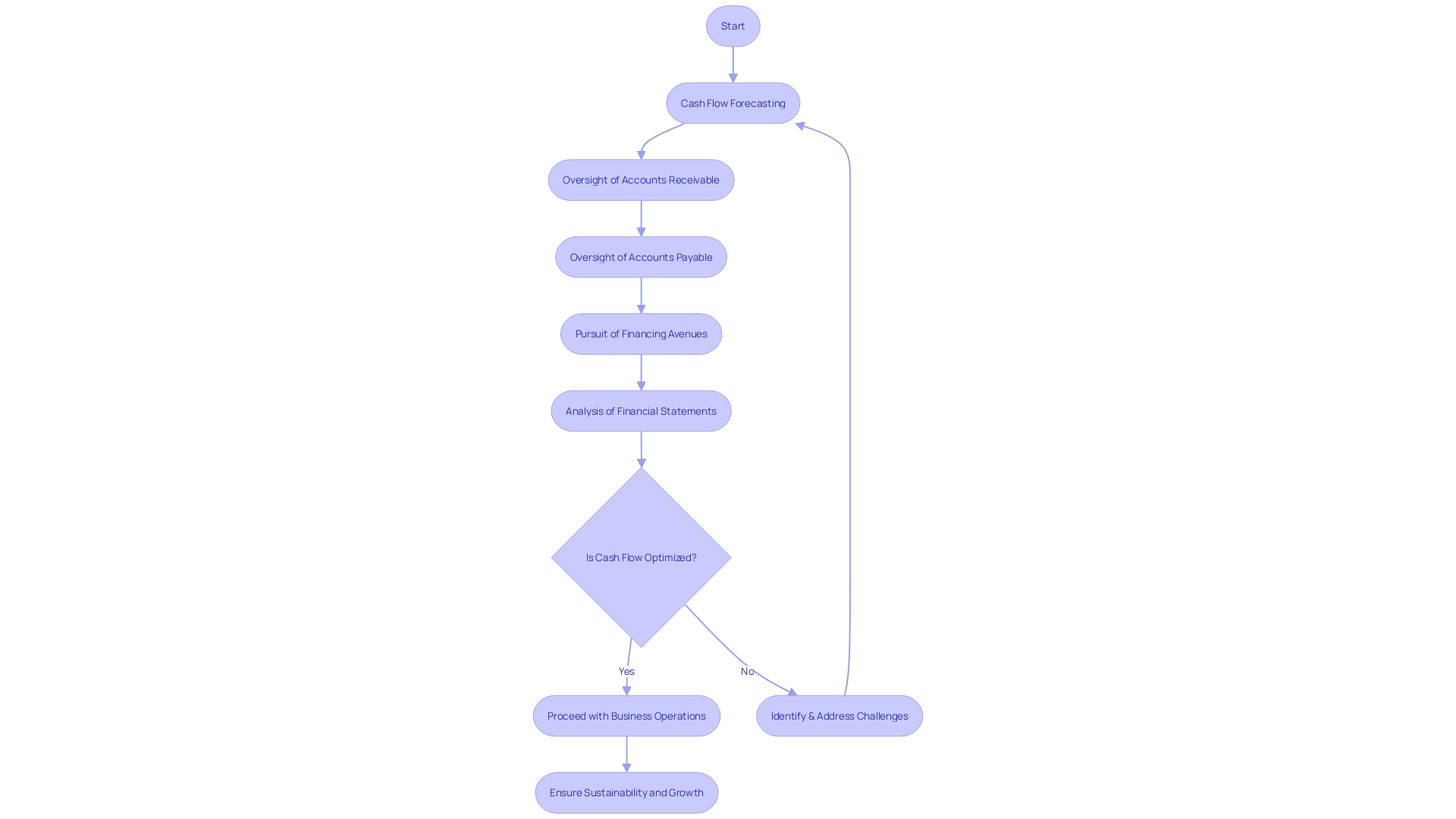Introduction
In today's fast-paced and competitive business environment, CFOs face numerous challenges that can impact the financial health and success of their organizations. From inadequate business planning to insufficient capital and cash flow management, these pitfalls can hinder growth and lead to potential failure. Additionally, not putting the customer first and failing to innovate and adapt can also have dire consequences.
This article explores these key areas and provides practical insights and solutions for CFOs to navigate these challenges successfully. By understanding the importance of meticulous planning, effective capital management, customer-centricity, and innovation, CFOs can steer their organizations towards long-term success in an ever-changing market landscape.
Lack of Effective Business Planning
A strategic plan is a foundational tool for a company's success, serving as a blueprint that defines its objectives and the necessary steps to achieve them. However, the path to success is fraught with potential pitfalls, as exemplified by Toyota's Woven Planet venture. Despite a visionary investment, the execution faltered, highlighting the critical need for meticulous planning and agile response to market developments. This example highlights the significance of a plan that not only defines objectives but also foresees risks and establishes a responsive framework for change.
Executives in financial roles can gain insights from cases like Woven Planet and others where mergers and acquisitions did not yield the expected value due to inadequate execution. A successful plan should incorporate a strong process for assessing and implementing change, which includes active listening to both team members and customers, and clear communication strategies. By doing so, CFOs can facilitate successful adjustments and pivots when necessary.
Expertise in financial analysis and risk management, such as that gained from experience in the banking sector, can be invaluable in developing a plan that accounts for financial forecasts and strategic investment planning. The acquisition of sales skills is also crucial, as they enhance the ability to articulate the logic and benefits of a company's direction—vital for securing customers, financing, and investors.
Data from Startup Genome reveals the scale of the startup landscape, with over 600,000 startups worldwide, predominantly in technology, healthcare, and finance sectors. This competitive environment further stresses the requirement for a strong plan capable of guiding a company through the challenges of market entry and growth. Fundamentally, a well-organized plan for a company is not merely a record; it is a strategic, dynamic structure that equips an organization to navigate the intricacies of the corporate landscape and guide towards enduring prosperity.

Insufficient Capital and Cash Flow Management
Addressing the challenges of insufficient capital and suboptimal cash flow management is crucial for the sustainability of an enterprise. Many enterprises find themselves handicapped by insufficient funds, which stymies their operational capacities and stifles growth prospects. Simultaneously, inadequate management of cash flow, characterized by late receivables or excessive spending, can cause liquidity shortages, making it impossible for the company to fulfill its financial obligations.
CFOs must take the helm in preemptively steering capital and cash flow towards a robust financial future. This entails the institution of rigorous cash flow forecasting practices, diligent oversight of accounts receivable and payable, and a strategic pursuit of financing avenues to augment capital reserves.
Capital allocation is a fundamental skill; it's the judicious deployment of a company's cash output that either enhances its long-term value or depletes it. Similarly, cash flow is likened to the lifeblood of a small enterprise, crucial for the procurement of inventory, settlement of expenses, and remuneration of staff.
Moreover, experts, including Dr. Sharon H. Porter, emphasize the imperative of meticulously analyzing financial statements—cash flow statements, income statements, and balance sheets—to gain insights into revenue, expenses, profitability, and indebtedness. Such financial literacy is essential for making informed decisions and promoting the success of the enterprise.
Current trends suggest a rise in bankruptcies, with the second quarter of 2023 witnessing the highest numbers since 2015. This highlights the need for businesses to adopt sound financial strategies and consider expert advice to mitigate the risk of failure. By doing so, CFOs can avert the perils of insolvency and chart a course towards fiscal stability and prosperity.

Not Putting the Customer First
Businesses that overlook the significance of customer-centricity are inadvertently setting themselves up for a decline in sales and, potentially, failure. An essential factor in succeeding in competitive industries is a thorough comprehension of one's target audience and their evolving requirements. Companies must deliver value and actively seek out and consider customer feedback to retain their client base against competitors.
A thorough understanding of the industry and industry trends is crucial for CFOs who aim to guide their organizations towards a customer-focused direction. It entails exploring the industry at a macro level to understand the competitive dynamics and identifying opportunities or risks that may affect the enterprise. In accordance with the direction of the industry, thriving enterprises are observed to place greater emphasis on ensuring the satisfaction and experience of their clientele.
To effectively contribute to this approach, collaboration with marketing and sales teams becomes essential for financial officers. This collaboration is intended to gather consumer insights, conduct comprehensive market research, and formulate strategies that resonate with consumer preferences. The incorporation of client relationship management systems and the strategic use of client data is vital for CFOs to comprehend their target market and to meet client demands accurately.
An impressive illustration of client-focused excellence is the smooth Omni-channel experience provided by a company that managed to maintain a conversation with a patron across multiple platforms without interruption. This level of service, where the client's time and experience are respected, showcases the practical embodiment of a customer-first strategy. Such an approach not only solves immediate problems but also builds lasting loyalty.
In the domain of client experience, recent trends suggest a change in priorities among care leaders. The initial focus on client experience is now converging with the importance of operational improvement and technology enhancements. The care function's role in driving revenue generation has also gained traction, now being a priority for one-third of leaders in the field.
Furthermore, incorporating values that resonate with clients, such as environmental responsibility, inclusivity, and fair employment practices, can greatly enhance client preference. It is no longer sufficient to solely offer products or services; organizations are anticipated to be mindful entities that individuals can rely on and feel positive about endorsing.
In the end, prioritizing the customer is not only a tactic for long-term development; it is a crucial element of a company's capacity to adjust and prosper in a constantly evolving market environment.
Failure to Innovate and Adapt
The capability to innovate and adapt is not only a competitive advantage—it's a survival mechanism in today's swift-paced economic environment. Consider Kodak, a one-time giant in the photography industry whose downfall showcases the perils of ignoring technological shifts. Despite inventing the first digital camera, Kodak clung to its film-based business model and was ultimately eclipsed by digital competitors. Similarly, the tech industry, including the rise of companies like Airbnb and Stripe, demonstrates the importance of embracing change, even when it introduces organizational stress. Successful companies understand their customer needs and constantly evolve through technology-driven innovation.
Retail giants like Debenhams and Nokia's fall from grace further illustrate this point. Nokia, once a titan in the mobile phone market, failed to capitalize on the smartphone revolution instigated by Apple's iPhone. Retail analyst Natalie Berg emphasizes that maintaining relevance in the digital age requires continuous evolution and experimentation. The tech industry's exponential growth in 2023, with enterprises integrating technology into their daily operations, underscores the need for adaptability.
Businesses are instrumental in progress, as seen in the healthcare sector where innovations in pharmaceuticals, medical devices, and telemedicine have dramatically increased the global average life expectancy since 1950. These advancements are a testament to the transformative power of innovation in business.
For CFOs, the responsibility is clear: foster a culture of innovation, stay abreast of industry trends, and allocate resources towards research and development. By doing so, they not only secure their organization's current standing but also pave the way for future opportunities and long-term success.
Conclusion
In conclusion, CFOs face challenges in business planning, capital management, customer-centricity, and innovation. To succeed, CFOs must prioritize meticulous planning, incorporating feedback from team members and customers. They should steer capital and cash flow through forecasting, oversight, and strategic financing.
CFOs should collaborate with marketing and sales teams to understand the target audience and formulate customer-focused strategies. By integrating customer relationship management systems, they can cater to customer demands precisely. Finally, CFOs must foster a culture of innovation, staying updated on industry trends and allocating resources to research and development.
By embracing change and evolving through technology-driven innovation, CFOs can secure their organization's future success.




